In-Depth Review of the Smallest Smartphones from 2020
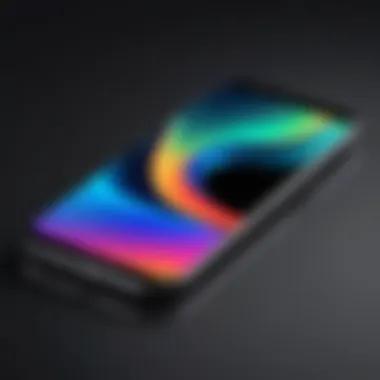
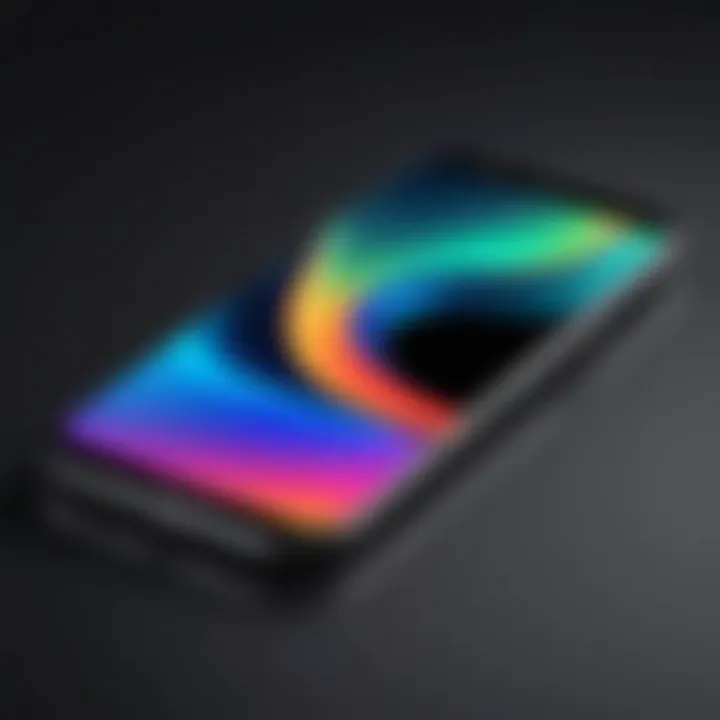
Intro
The rise of compact smartphones has reshaped our understanding of mobile technology. In 2020, multiple brands introduced smaller models that didn't just aim to be petite but also sought to deliver robust performance. The smallest smartphones were engineered with a purpose, catering to users who prefer devices that fit snugly in their pockets without compromising on functionality. This exploration will dissect the core features, performance capabilities, and user experience of these devices, providing IT professionals and tech enthusiasts an integrative glimpse into a niche yet significant trend in the smartphone market.
Features Overview
When diving into the world of small smartphones, one must first consider the essence of their design and how it informs their utility. In stark contrast to bulkier counterparts, the smallest smartphones often rely on innovative crafting that marries aesthetics with practicality. The following subsections illuminate key specifications and unique selling points that distinguish these devices from traditional smartphones.
Key Specifications
Many small smartphones from 2020 came equipped with impressive hardware, often surprising users with their capabilities despite their diminutive size.
- Display Size: Generally less than 5.5 inches, models such as the iPhone SE (2020) and Samsung Galaxy Z Flip were perfect examples of this.
- Processor: Despite the size, a majority employed high-performance processors like the Apple A13 Bionic chip or Qualcomm Snapdragon 855, ensuring fast and fluid performance.
- RAM and Storage Options: Offering between 3GB to 8GB of RAM with storage options ranging from 64GB to 256GB, the small phones could hold their own in multitasking scenarios.
- Camera Quality: Competing with larger devices, several small models sported multiple camera setups, delivering impressive photography features without the added bulk.
Unique Selling Points
These smartphones hold appeals that stretch beyond their size. The distinctive qualities may vary across models, but several selling points emerge consistently.
- Portability: Their compact nature makes them effortless to carry, enhancing mobility for users on the go.
- User Friendliness: Many of these models come with simplified interfaces, catering to users looking for straightforward functionality without the complexities of larger models.
- Robust Battery Life: Contrary to expectations, some smaller devices have managed to pack substantial battery life, ensuring they stay powered through a busy day of use.
"The trend towards smaller smartphones must not be viewed just through a lens of size but rather as a paradigm shift in the mobile technology landscape."
Performance Analysis
Moving beyond the specifications, it's essential to probe deeper into how these compact smartphones performed in day-to-day scenarios. Performance isn't about numbers alone; it's the user experience that truly counts. Evaluating benchmarking results and real-world usage helps clarify how these products function under pressure.
Benchmarking Results
Several industry-standard benchmarking tests demonstrate how these smaller devices stand up to their larger rivals. Popular tools like Geekbench and AnTuTu reveal interesting insights:
- Geekbench 5 Scores: Offers a comparative perspective in single-core and multi-core performance; many small devices clocked impressive scores.
- AnTuTu Rankings: Highlights overall performance, factoring in graphics and user experience metrics.
Real-world Scenarios
Understanding a smartphone's performance is not solely reliant on bench tests. Real-world application plays an equally significant role:
- Daily Tasks: For routine activities like browsing, social media, and messaging, small smartphones handled tasks smoothly, making them suitable for everyday users.
- Gaming Performance: Many enthusiasts might worry about gaming on smaller models, but real-world tests indicated acceptable performance with titles such as Call of Duty Mobile and PUBG.
Intro to Compact Smartphones
In a world where bigger seems to be the norm, the emergence of compact smartphones is nothing short of refreshing. The trend towards smaller, more manageable devices speaks volumes about user preferences. With a myriad of options flooding the market, the question arises: what truly defines a small smartphone and how significant is size in today’s tech landscape? This section aims to unravel the intricacies surrounding compact smartphones, offering insight into their design philosophies and the factors contributing to their increasing relevance in an age dominated by megascreens.
Defining Small Smartphones
Small smartphones, in essence, are devices that prioritize portability without sacrificing functionality. Typically, these smartphones have a screen size that hovers around 5 inches or less. However, the definition isn't just about size; it's about how a device fits into the daily lives of its users. The ease of handling and practicality in navigation are key components.
Moreover, manufacturers often aim for sleek designs that don’t just look good but also provide comfort. A palm-sized device can often feel like a breath of fresh air amidst the plethora of gargantuan models available. People who find larger screens cumbersome can appreciate these smaller options, which emphasize usability over mere specifications.
Significance of Size in Today's Market
The significance of size takes center stage in an environment where consumer preferences are rapidly evolving. Small smartphones present a unique value proposition that caters to various user demographics. For instance, urban dwellers often grapple with tight pockets and crowded public transportation; therefore, a light, compact phone becomes not only an option but a necessity.
Key points to consider include:
- Portability: The inherent design of small smartphones allows for easy one-handed use, enhancing accessibility.
- User Experience: Stats show users often prefer quicker interactions, and smaller screens can facilitate that.
- Battery Efficiency: Smaller devices can optimize energy consumption due to less screen area, which can prove advantageous for daily usage.
"The simplified experience offered by smaller smartphones resonates with users who value speed and convenience over complex functionalities."
Amidst the crowded smartphone market, the focus on compact designs reveals a deeper trend of consumer demand for practicality, serving as a bridge between functionality and comfort. As we delve deeper into this article, we'll explore how these elements interplay with the performance metrics of specific models, leading us into a broader conversation about the technological innovations shaping compact devices.
Overview of Smartphone Trends in
In 2020, the smartphone industry witnessed some noteworthy movements. The landscape was shifting towards compact devices, marking a significant pivot from the prevailing trend of larger smartphones. As users become increasingly aware of their precision needs, the demand for smaller devices that still pack a punch started to gain traction. Notably, this article delves into this phenomenon, examining not only the compact smartphones available but also the broader implications this trend has in the market.
Shift Towards Compact Devices
The trend towards smaller smartphones indicates a maturation of consumer preferences. While it wasn't long ago that bigger was considered better, users are now finding value in devices that offer portability without sacrificing performance. The shift has not merely stemmed from user preference; lifestyle changes also played a critical role. People have solidified habits of multitasking, navigating various apps with ease on the go. Their need for smaller devices that fit conveniently into pockets or bags has prompted manufacturers to rethink their design philosophies.
Another palpable reason for this movement revolves around the minimalist approach. Consumers are weary of the excessive size of average smartphones that can almost double as mini tablets. Compact smartphones present a solution that not only enhances mobility but also redefines simplicity and elegance. Brands like Apple and Google have started to pivot, offering mini variants of their flagship products, catering to this ever-growing segment.
Consumer Preferences and Market Impact


Looking closer at consumer preferences reveals several layers to this trend.
- Functional Efficiency: Small smartphones tend to be easier to navigate with one hand, meeting the needs of on-the-go users. Users appreciate quicker access to apps, messaging, and calls without clumsy finger gymnastics.
- Aesthetic Appeal: There's an undeniable charm in a sleek, compact design. Manufacturers have harnessed this to present more visually striking devices. Users are gravitating towards smartphones that uphold both utility and style.
- Affordability: Often, smaller devices come at a price point that’s more accessible. It presents a viable option for younger demographics, such as students or new professionals entering the workforce, who seek quality without breaking the bank.
The market’s reception of these compact smartphones is evident, with sales reflecting a curious blend of nostalgia for simpler designs and the unresolved appetite for cutting-edge features.
"Compact smartphones are not just a trend, they represent a pivotal change where form meets function, enhancing the everyday life of users."
As the landscape keeps evolving, it’s essential for stakeholders to keep a keen eye on how these shifts affect not only product design but also marketing and sales strategies across the globe.
Ultimately, the move towards smaller smartphones embodies a balance of modern needs and historic values in tech design, leaving an indelible mark on the industry.
Detailed Reviews of Smallest Smartphones
In an age where bigger often seems better, the emergence of compact smartphones offers a refreshing alternative, emphasizing portability without sacrificing functionality. When discussing the smallest smartphones released in 2020, it's crucial to dive into detailed reviews that not only highlight their specifications and capabilities but also reflect on their positioning in a crowded market. Detailed reviews provide a lens through which potential buyers can evaluate the practicality and performance of these devices in real-life scenarios, ensuring that they make informed choices based on their unique needs.
Smartphone A
Design & Build Quality
The design and build quality of Smartphone A stands out strikingly. Crafted from premium materials, its aluminum frame and glass back not only lend an elegant touch but also ensure durability. This device feels robust yet surprisingly lightweight, making it a comfortable fit for extended usage. Notably, the compact design does not compromise grip; it fits snugly in hand, which is often a concern with smaller devices.
A unique feature of its build is the IP68 rating for water and dust resistance, a rarity among compact options. This adds to the peace of mind for those who lead active lifestyles, allowing for a more adventurous spirit in its usage.
Specifications
Turning to specifications, Smartphone A packs a punch despite its size. With a Snapdragon 855 processor, it provides powerful performance even for demanding applications. Furthermore, it offers 128GB of internal storage, a boon for users who tend to store numerous apps and media files. The standout characteristic has to be its 5.8-inch AMOLED display, which delivers vibrant colors and sharp images. However, one limitation to consider is the absence of expandable storage, which could deter some potential buyers.
User Experience
When it comes to user experience, Smartphone A shines. With its intuitive interface, users can navigate seamlessly between applications. The device also excels in battery management, providing a full day of usage under moderate conditions, thanks in part to its adaptive brightness features. A unique aspect is its one-handed mode, which enhances usability even further for those using smaller devices. Yet, some users might find the keyboard cramped if they have larger hands, presenting a slight challenge during extended typing sessions.
Performance Evaluation
Performance-wise, Smartphone A impresses with its speed and responsiveness. Whether it's multitasking through various apps or gaming on graphic-intensive titles, it handles tasks smoothly with little to no lag. The notable characteristic here is its thermal management, as it remains cool even during prolonged use. One must consider, however, that heavy-duty tasks can lead to quicker battery drain, which is an essential factor in everyday usage evaluations.
Smartphone B
Design & Build Quality
Smartphone B’s design revolves around utility and style, featuring a minimalist aesthetic and a sturdy polycarbonate body. Although the materials might not feel as upscale as those found in Smartphone A, they contribute to a lightweight and durable experience. The highlight here is its rugged design, with reinforced corners that prevent damage from drops, ideal for those who may be a bit clumsy.
Specifications
In terms of specifications, Smartphone B sacrifices some high-end features to offer affordability. It comes with a MediaTek Helio P60 processor, which, while not the fastest on the market, is competent for daily tasks such as browsing and social media. Additionally, it has a 6.0-inch LCD display, which serves its purpose well, although it's not as vivid as AMOLED options. One downside may be the limited 64GB storage, which could be restricting for more extensive app users.
User Experience
User experience is generally positive with Smartphone B. Its lightweight nature makes it easy to carry around, while its responsive touch interface ensures smooth navigation. The phone supports all the essential features expected in modern smartphones, including decent camera functionality and basic multitasking capabilities. However, it may be less appealing to those craving high-resolution media consumption or extensive gaming.
Performance Evaluation
Performance-wise, Smartphone B performs adequately for everyday activities. It does struggle with heavier applications and multitasking, often showing signs of lag, especially when pushing its limits. The battery, while decent, has received mixed reviews, with some users noting that it could easily run out during more demanding uses. This aspect can be a dealbreaker for those who constantly rely on their phones throughout busier afternoons.
Smartphone
Design & Build Quality
Smartphone C embraces a unique design, combining both style and functionality. Sporting a glass back and metallic edges, it stands out as a premium option within the compact category. The comfort of holding it feels just right, but potential users should be cautious; the glass back could be prone to shattering if dropped. An added benefit is its lightweight feel, allowing for extended use without fatigue, which is a considerable plus for readers seeking practicality.
Specifications
Smartphone C is laden with specifications that draw in tech-savvy users. Utilizing an Exynos 990 chip, it offers outstanding performance, catering well to gamers and power users alike. Its 5.9-inch AMOLED display is another highlight, known for deeper blacks and brighter colors, enhancing visual media experiences. Still, its 256GB internal storage does not support microSD, which limits expansion options, posing a slight setback for users hoarding apps.
User Experience
The user experience with Smartphone C is generally streamlined. The combination of its interface and processing power leads to smooth transitions and responsiveness. It also features customizable UI options, allowing users to tailor their experiences, which keeps the engagement level high. However, the camera’s performance in low light settings might not meet the expectations set by its peers, which could lead to disappointments for photography enthusiasts seeking superior shots in all conditions.
Performance Evaluation
Performance evaluation of Smartphone C reveals it is a powerful contender in its category. Gamers and multitaskers will appreciate the speed and efficiency of the processing power. The device excels in running intensive applications and games without much throttling. Some users, however, noted it generates heat during extensive gaming, which could be troublesome for those looking to maximize their playtime without interruptions.
"Choosing a compact smartphone doesn't mean compromising on features. It's about finding the right balance between size and functionality to suit your lifestyle."
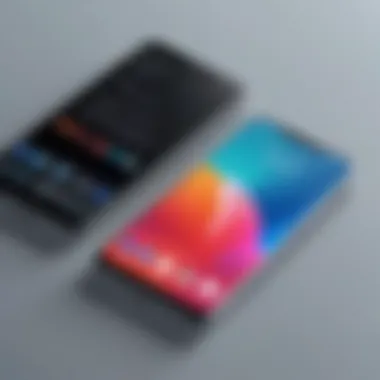
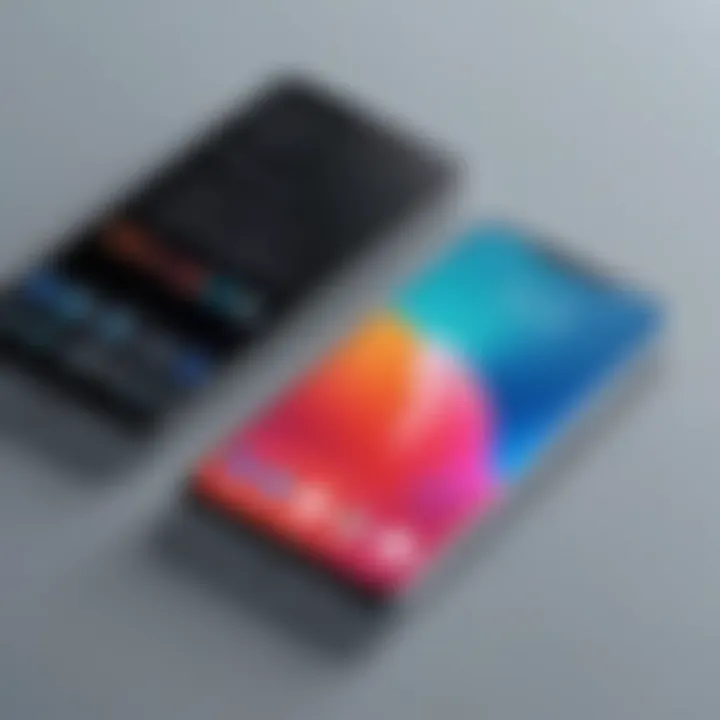
In summary, detailed reviews of the smallest smartphones — Smartphone A, B, and C — reveal a mixed bag of features and performance levels. Each brings its unique strengths and weaknesses to the table, catering to different user needs, lifestyle preferences, and budgetary constraints. Understanding these nuances helps users make informed decisions that align with their on-the-go lives.
Comparative Analysis of Performance Metrics
Comparative analysis of performance metrics serves as a cornerstone for understanding how the smallest smartphones distinguish themselves in a saturated market. In 2020, manufacturers focused not just on compacting devices but also maintaining substantial performance capabilities. This section sheds light on three critical metrics: battery life and efficiency, processing power and speed, and user interface and usability. Each of these elements contributes significantly to the user experience and helps in determining whether a small smartphone caters to the needs of its intended audience.
Battery Life and Efficiency
Whether you're a power user or a casual smartphone owner, battery life is paramount. Small smartphones often come equipped with reduced battery sizes due to their compact forms, demanding more from the available capacity. Advancements in battery technology, such as the adoption of lithium polymer cells, have enabled manufacturers to offer better efficiency. For flinstance, the iPhone SE (2020) showcases a balance of size and battery performance, often making it through a full day with average use despite its smaller battery compared to bulkier models.
Additionally, software optimizations play a significant role in enhancing battery life in these compact devices. Features like adaptive brightness and background activity management aid in conserving power, providing essential longevity.
"Battery life has become a foregone necessity in the modern smartphone era, particularly where smaller devices are concerned."
Processing Power and Speed
Processing power in small smartphones is often a contentious topic. Consumers expect flagship performance even in smaller shells. This is where smartphone makers like Google and Apple have made strides by integrating powerful chipsets like the A13 Bionic in the iPhone SE (2020). These chips deliver exceptional speed and multitasking capabilities while fitting comfortably into dainty designs.
However, it’s not just about the raw speed; optimization of software is equally important. The smooth operation of Android and iOS, along with the application ecosystem, determines how well the device manages its resources. Users seeking out a compact smartphone want to know if they can play graphics-intensive games or run heavy-duty applications without any hiccup. Thus, the blend of hardware and software optimization is crucial.
User Interface and Usability
The user interface (UI) and usability of small smartphones are critical aspects, especially considering their compact nature. A cramped screen space can often mean a tricky navigation experience. Manufacturers like Samsung and Sony have invested in UI design enhancements tailored to smaller displays. For instance, they use larger touch zones and customizable layouts that ease user interaction.
Moreover, usability isn't just about touch; it's about the entire interaction experience. Finding a balance between sleek design and functional interface is what sets small smartphones apart. The ability to use the device with one hand is often a major selling point, and companies emphasizing this in their design philosophy provide a competitive edge.
Market Positioning of Small Smartphones
As compact devices continue to carve out their niche in the smartphone landscape, understanding their market positioning becomes crucial. This section emphasizes the critical factors that define where these small smartphones fit within the industry and how they appeal to specific user bases. By delving into demographics and pricing strategies, we can gain a clearer picture of the small smartphone’s role and significance in contemporary technology.
Target Demographics
The target demographics for small smartphones are varied but often share common characteristics. Primarily, these devices tend to attract users who prioritize simplicity and portability.
- Young Professionals: Many young professionals lean towards compact smartphones due to their busy lifestyles. Lightweight and pocket-friendly phones allow for easy transport which suits high mobility.
- Minimalists: This group values functionality without unnecessary features. Small smartphones often offer a straightforward user experience, catering to those who dislike the overwhelming options found in larger models.
- Elderly Users: Seniors are increasingly using smartphones, and smaller models often appeal to this demographic. Their limited hands-on experience with technology makes simpler, smaller devices a preferable choice.
- Parents with Small Children: Parents often look for practical devices that are lightweight and easily manageable. Given that children are prone to dropping things, small smartphones that are also affordable make sense.
The number of users in these demographics underscores the importance of understanding how small smartphones can be effectively marketed. Crafting messages that resonate with potential customers can enhance engagement and foster loyalty.
Price Variance and Value Proposition
When it comes to small smartphones, price variance is an important aspect. Typically, these devices position themselves as budget-friendly alternatives without compromising essential features. Companies often need to strike a balance between affordability and quality, ensuring value for users.
- Budget Range: Many compact smartphones come in a budget range, making them accessible to a larger swath of consumers.
- Mid-Range Options: Some brands offer mid-range compact phones that include better specifications, appealing to users who may be looking for something slightly more premium without breaking the bank.
- High-End Models: Surprisingly, some manufacturers have also launched high-end small smartphones that emphasize advanced technology and sophisticated designs. These tend to target enthusiasts who want a powerful device but do not wish to carry around a bulky model.
A strong value proposition ensures that customers feel they are gaining more than just a phone. When users recognize that they are not just purchasing a device, but also embracing a lifestyle, they are more likely to make a purchase. The economic aspect cleanly ties into the overall approach businesses must consider in their marketing strategies.
"Success in selling compact smartphones largely relies on understanding your audience and shaping offerings to meet their nuanced needs."
Technological Innovations in Compact Devices
The realm of small smartphones is not merely a niche; rather, it embodies a significant segment of the market responding to the current demands of portability, efficiency, and functionality. In a time when everyone seems to be connected, innovations in compact devices have become pivotal. The clever integration of technology in a smaller package addresses not just the aesthetic appeal but also user convenience and practicality.
Camera Technology Advancements
When discussing camera technology advancements, one cannot overlook the miraculous feats achieved despite compact sizes. Traditionally, smartphone cameras were the Achilles’ heel of smaller devices, plagued by inferior optics and less effective sensors. In 2020, however, we witnessed a remarkable shift. Manufacturers began using larger apertures to gather more light and improve image quality dramatically.
For example, some models introduced multi-lens systems in reduced dimensions, which allowed for various photographic styles—from ultra-wide to macro shots. Optics like Super Night mode are becoming standard in these smaller devices, enabling users to capture clearer images in low-light conditions without the bulk of better-performing equipment. The advances in image processing algorithms—think of techniques like computational photography—have been game-changers. They allow smartphones to produce stunning photos that can rival those taken with dedicated cameras.
Benefits of these advancements include:
- Enhanced image clarity and detail, combating the inclination to underestimate small devices.
- User-friendly features, such as automatic adjustments for varying lighting conditions.
- Greater creativity options for photography enthusiasts with different shooting modes available in compact devices.
"The innovations in camera tech redefine what’s possible in the palm of your hand; it’s not just about smaller sizes anymore but bigger imaginations."
Display Technology Improvements
Next up are display technology improvements, a crucial aspect that absolutely cannot be neglected in discussing compact smartphones. Over the years, displays have evolved into something remarkable. Small devices now frequently feature edge-to-edge OLED displays, providing vibrant colors and deeper contrasts. This shift not only enhances the visual experience but also makes usability much more enjoyable.
One standout improvement comes from the implementation of adaptive refresh rates. Many compact smartphones now boast screens that can dynamically adjust their refresh rates based on usage, saving battery life while also providing smooth scrolling and gaming experiences when necessary. Additionally, advancements in screen durability, such as Gorilla Glass or ceramic shield technologies, ensure that these smaller devices can withstand the wear and tear of daily use, contributing to their appeal.
Key points in this area include:
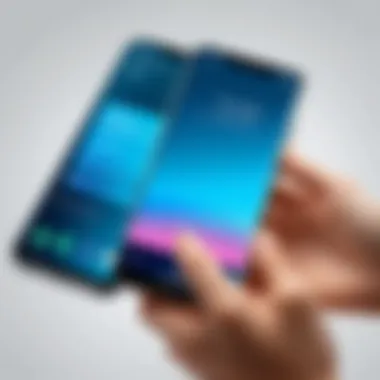
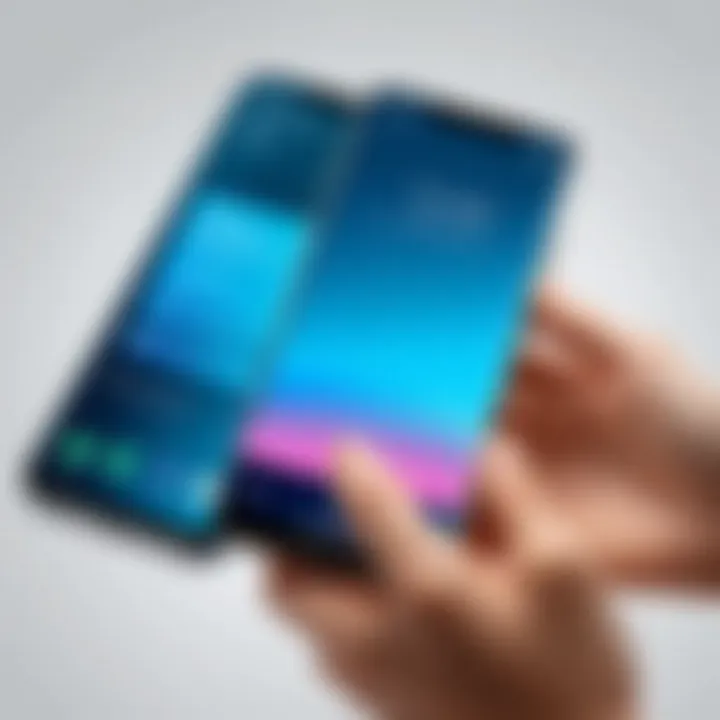
- Improved resolution leading to sharper, clearer images and video playback.
- Enhanced durability, which is crucial for the smaller form factor with less protective bulk.
- Increased screen sensitivity, allowing for more accurate touch response, making everyday tasks feel seamless.
The emphasis now lies not merely on packing features into a smaller device but redefining the experience of using such technology. Compact devices, equipped with these innovations, do not leave the user wanting but instead foster a sense of empowerment through their capabilities.
Challenges Faced by Small Smartphones
As we navigate the shifting tides of the smartphone industry, it’s crucial to understand the challenges that small smartphones encounter. These devices, despite their charm and user-centric design philosophies, don’t walk a smooth path. Examining these challenges sheds light on what makes or breaks a compact phone in today’s competitive market. The issues span hardware limitations, user adaptability, and overall market acceptance.
Limitations in Hardware Specifications
When it comes to small smartphones, one of the most pressing challenges lies in the limitations of hardware specifications. Unlike their larger counterparts, which can house state-of-the-art components, the compact nature of small devices often leads to compromises. For example, smaller batteries typically mean limited longevity, affecting overall user satisfaction.
Moreover, when manufacturers attempt to cram high-end features into small phones, trade-offs are often made in terms of processing power or graphics capabilities. The latest processors might not fit alongside ample RAM, making it hard for small devices to keep pace with high-performance demands. As a result, capabilities like gaming or intensive multitasking can suffer.
If we take a close look at various models available in 2020, many of them showcase reduced hardware. Lesser RAM, limited storage options, or even simplistic cameras are commonplace. Consumers looking for a compact experience often face a reality where they must sacrifice sensory excitement for convenience. Therefore, striking a balance between carrying a smaller device while still satisfying tech-savvy users is a challenging endeavor.
User Adaptability to Smaller Interfaces
Another deserving consideration while evaluating compact smartphones is user adaptability to smaller interfaces. Navigating a smaller screen can be a cumbersome task, especially for users more accustomed to larger displays.
Many people find that their fingers, like clumsy elephants, struggle with precision on a compact screen. Typing becomes a trial, and tapping on small icons can easily lead to frustration. This experience can turn off potential buyers who expect seamless interaction with their devices.
Furthermore, users often have an ingrained habit of manipulating their smartphones with more extensive gestures that might require a substantial screen real estate. In the face of the swift evolution of smartphone technology, adapting to a radically different interface can be daunting. While there’s a cadre of consumers who appreciate the compact design, it’s still an uphill battle to convert those who prefer larger displays for enhanced usability.
"Consumers looking for small smartphones are often forced to navigate a pickle: enjoy the convenience of portability but face the quirks of a smaller interactive experience."
Future Perspectives on Compact Smartphones
The future of compact smartphones stands at an intriguing juncture, where both technology and user preferences continuously evolve. As more individuals gravitate towards devices that harmoniously blend functionality with portability, understanding the trajectory of these small devices becomes vital. The ongoing shifts in consumer behavior and innovation trends imply a fascinating landscape ahead for compact smartphones.
Predicted Trends and Innovations
The compact smartphone segment is on the cusp of several pivotal trends that are likely to define its future. First, manufacturers are increasingly investing in miniaturization technologies. This means not just making phones smaller, but also enhancing the components inside them. For example, the integration of next-gen chips, like the A14 Bionic from Apple, demonstrates how powerful hardware can co-exist with smaller form factors. More importantly, advancements in battery technology—think solid-state batteries—could significantly improve battery life without enlarging device size.
Another notable trend is the enhanced focus on software optimization for smaller screens. User interfaces are transitioning towards more elemental designs that maximize usability on compact displays. Features like adaptive layouts and gesture-based controls are gaining traction. These are not just gimmicks; they can fundamentally change how users experience their devices.
In terms of camera technology, future compact smartphones may incorporate advanced computational photography capabilities. Innovations in image processing software can bring high-quality images within reach, even with smaller camera lenses. Emerging technologies, such as image sensors with better light sensitivity, could further elevate the photography experience.
**Here are some predicted innovations:
- Better battery technologies: Solid-state batteries for higher capacity
- Display advancements: OLED and MicroLED displays for vibrant visuals on smaller screens
- Enhanced cameras: Multi-lens setups with AI-based enhancements**
"A smartphone’s journey is not solely about size; it’s the pursuit of balance between compactness and performance that defines its evolution."
Potential Market Growth and Opportunities
The market for compact smartphones is ripe for growth, driven by a confluence of factors that favor smaller devices. With continuous urbanization, an increasing number of consumers prefer lightweight options that can easily slide into pockets or bags without being cumbersome. Moreover, the rise of remote working and digital nomadism has further propelled this trend, as professionals seek efficient, travel-friendly gadgets.
One noteworthy opportunity lies in the niche market of seniors and tech newcomers. These demographic segments often favor simpler, less intimidating devices over complex smartphones. Manufacturers that tailor their marketing and design strategies towards such users could witness remarkable success.
Additionally, environmental considerations cannot be overlooked. Compact smartphones typically utilize fewer resources, making them more attractive to a growing audience concerned about sustainability. This shift towards eco-friendliness may lead consumers to choose smaller devices, giving companies a chance to innovate while aligning with contemporary values.
**Key opportunities include:
- Targeting seniors with user-friendly designs
- Catering to environment-conscious consumers with sustainable practices
- Emphasizing portability for busy professionals on the go**
In sum, the future of compact smartphones appears bright, filled with dynamic innovations and market opportunities. As technology continues to shrink while enhancements abound, these devices are poised to solidify their position in the smartphone ecosystem.
Closure
In this fast-paced, ever-evolving world of technology, small smartphones hold a unique position. They are not just compact versions of their larger counterparts; they cater to a specific demographic that values portability without sacrificing functionality. This article explored the myriad aspects of the smallest smartphones launched in 2020, a year when consumers increasingly gravitated towards devices that fit snugly in their pockets while still delivering robust performance.
Summarizing Key Takeaways
The main takeaways from this examination include:
- Diverse Design Choices: Each examined smartphone showcases different design philosophies, signaling how firms are adapting aesthetics to meet user demand for smaller devices without skimping on features. For example, the iPhone SE (2020) stood out with its classic looks while others like the Sony Xperia XZ2 Compact favored a more modern flair.
- Essential Features Drive Success: Functionality often trumps size for potential buyers. The examined devices featured high-resolution cameras, competitive processing power, and adequate battery life, ensuring they remain relevant.
- Market Demand Influences Production: Consumer preferences are shifting rapidly. Manufacturers seem to take cognizance of this change, developing smartphones that prioritize mobility. The success of these devices indicates that there remains a significant market willing to invest in quality smaller smartphones.
- Future Growth Likely: As we look ahead, future smartphones appear poised to incorporate even more innovations, such as longer battery lives and advanced AI features, all while maintaining their compactness.
Final Thoughts on the Evolution of Small Smartphones
Reflecting on the evolution of small smartphones, it is clear that they have progressed beyond simple miniaturization. Today’s devices are equipped with capabilities that many consumers once thought only larger smartphones could provide.
The direction of the market points not only to a revival of interest in compact smartphones but also to a recognition of their utility in an increasingly mobile-centric world. As society continues to crave efficiency and portability, these devices are likely to evolve further, integrating cutting-edge technology into compact frameworks that accommodate both casual users and professionals alike.
Looking forward, the small smartphone segment may hold more surprises as competition heats up among leading brands, pushing the boundaries on what can fit in the palm of one’s hand. Tech enthusiasts and IT professionals should keep an eye on developments in this sector, as it could redefine how we view the smartphone experience.
The adaptability and innovation seen in small smartphones not only address consumer demands but also challenge the notion of functionality being directly proportional to size.
In summary, the smallest smartphones of 2020 serve as a testament to human ingenuity and the willingness of manufacturers to listen to their consumers. Their growth in popularity suggests this trend is here to stay, paving the way for a compelling future in compact technology.



